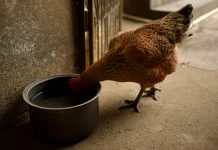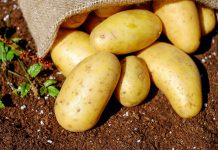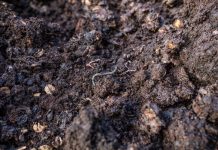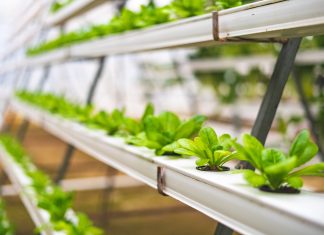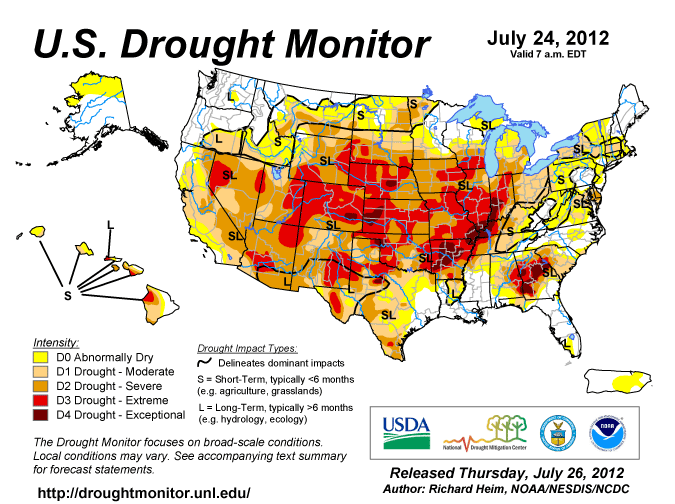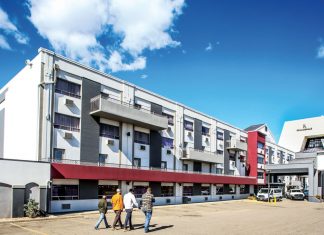INTRODUCTION
Growing food in small indoor areas has become increasingly popular in recent years as people look for ways to produce fresh produce in an urban setting. Whether you live in an apartment, a small house, or have limited outdoor space, indoor gardening can be a great way to grow food year-round. There are many different ways to grow food in small indoor areas, but some methods are more effective than others. In this article, we will explore the best ways to grow food in small indoor areas, including hydroponic, aeroponic, soil-based, and container gardening, as well as the importance of lighting for indoor gardening. With the right tools and techniques, anyone can successfully grow food in a small indoor area
Explanation of the importance of growing food in small indoor areas
Growing food in small indoor areas is important for a number of reasons. One of the most obvious benefits is the ability to produce fresh produce year-round, regardless of the weather conditions outside. This can be especially beneficial in areas with harsh winters or short growing seasons. Indoor gardening can also help to reduce the carbon footprint of food production by eliminating the need for long-distance transportation of produce.
Additionally, indoor gardening can also promote self-sufficiency and food security by allowing individuals and families to grow their own food. This can be especially beneficial for people living in urban areas where access to fresh produce can be limited. Indoor gardening can also be a great way to teach children about where food comes from and the importance of sustainability.
Furthermore, it can be a great way to improve mental and physical health, as gardening itself has been linked to reducing stress, promoting physical activity and providing a sense of accomplishment.
Overall, growing food in small indoor areas is a valuable and worthwhile endeavor that can have a positive impact on both personal and environmental well-being.
BRIEF OVERVIEW OF THE BEST WAYS TO GROW FOOD IN SMALL INDOOR AREAS
There are several ways to grow food in small indoor areas, but some methods are more effective than others. Some of the best ways to grow food in small indoor areas include:
- Hydroponic systems: These systems use nutrient-rich water rather than soil to grow plants. They are ideal for small indoor areas because they take up very little space and can be easily controlled to provide optimal growing conditions.
- Aeroponic systems: Similar to hydroponics, aeroponic systems use a mist of nutrient-rich water to grow plants. They are also ideal for small indoor areas because they take up very little space and can be easily controlled to provide optimal growing conditions.
- Soil-based systems: These systems use soil to grow plants and can be a great option for small indoor areas. They take up more space than hydroponic or aeroponic systems, but they are more forgiving if you’re new to gardening.
- Container gardening: This method involves growing plants in containers such as pots, bags, or trays. Container gardening is ideal for small indoor areas because it allows you to control the environment and easily move plants around.
- Lighting: Lighting is an important aspect of indoor gardening, especially in small indoor areas. The right type of lighting can provide plants with the energy they need to grow, even in low-light conditions. Permanent lighting options for homes and businesses are offered by professional permanent lighting installation.
Each of these methods has its own advantages and disadvantages, and the best one for you will depend on the specific requirements of your indoor gardening space and what you are looking to grow.
HYDROPONIC SYSTEMS
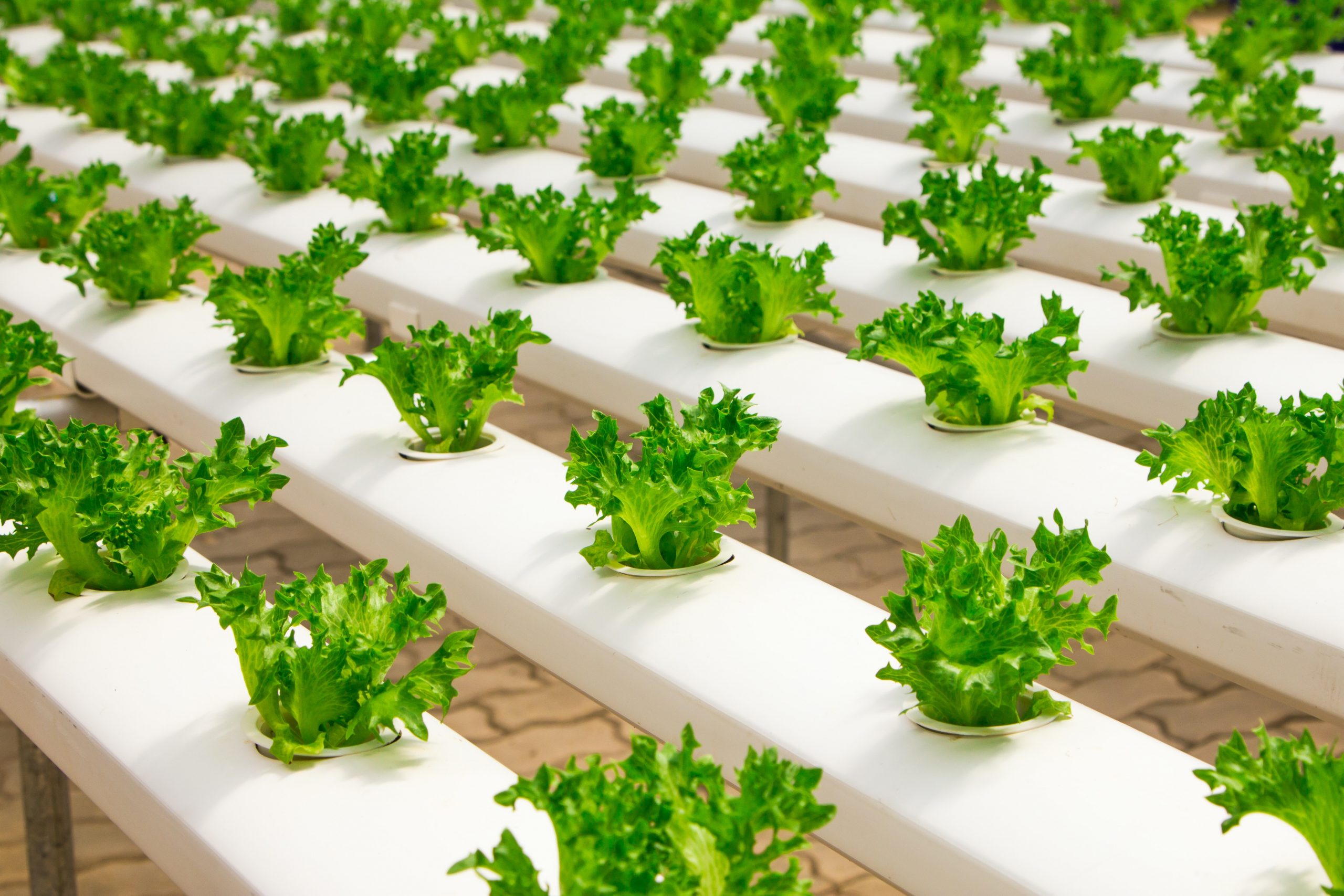
Hydroponic systems are a method of growing plants in a nutrient-rich water solution instead of soil. This method is considered one of the best ways to grow food in small indoor areas because it takes up very little space, can be easily controlled to provide optimal growing conditions, and can be set up in a variety of ways.
There are several types of hydroponic systems, including:
- Deep water culture: In this system, plants are grown in a container with their roots submerged in a nutrient solution. This method is simple to set up and maintain, making it a great option for beginners.
- Ebb and flow: This system uses a flood and drain method to deliver nutrient solution to the plants’ roots. The container is filled with water and nutrients, and then drained after a certain period of time.
- Drip irrigation: This system uses a series of pipes and emitters to deliver nutrient solution to the plants’ roots. The nutrient solution is delivered directly to the roots, allowing for more precise control of the amount of water and nutrients the plants receive. To keep the pipes in your irrigation system durable, you may want to add a Polyisocyanurate Pipe Insulation.
- Nutrient film technique: This system uses a shallow water flow over the roots of the plants in a container. It’s a more complex system that requires more maintenance, but it’s also more efficient and can support more plants.
- Aeroponics: This system uses a mist of nutrient-rich water to grow plants. The roots are suspended in the air and misted with water and nutrients at regular intervals.
Each of these methods has its advantages and disadvantages, and the best one for you will depend on the specific requirements of your indoor gardening space and what you are looking to grow. Hydroponic systems are efficient and easy to control, making it a great option for small indoor areas, where space is limited.
Explanation of what hydroponic systems are and how they work
Hydroponic systems are a method of growing plants in a nutrient-rich water solution instead of soil. They work by providing plants with the necessary nutrients, water, and oxygen they need to grow and thrive, while eliminating the need for soil.
In hydroponic systems, the plants are grown in a container, such as a tray or a pot, and their roots are submerged in a nutrient-rich water solution. The water is typically pumped into the container and then drained out after a certain period of time, depending on the type of system. The plants’ roots absorb the nutrients from the water, allowing the plants to grow and thrive.
The water used in hydroponic systems is typically enriched with all the necessary nutrients for plant growth, such as nitrogen, phosphorus, and potassium. The nutrient solution is also typically pH balanced to ensure that the plants are able to absorb the nutrients properly.
One of the key advantages of hydroponic systems is that they can be easily controlled to provide optimal growing conditions for plants. For example, the water temperature, pH, and nutrient levels can be easily monitored and adjusted to ensure that the plants are receiving the correct amount of water and nutrients. Additionally, hydroponic systems can be set up in a variety of ways, such as vertically or horizontally, making them a great option for small indoor areas where space is limited.
Overall, hydroponic systems are a highly efficient and effective method of growing plants in small indoor areas, providing a controlled environment for plants to thrive, without the need for soil.
Benefits of hydroponic systems for small indoor gardening
Hydroponic systems offer several benefits for small indoor gardening, including:
Space-saving: Hydroponic systems take up very little space compared to traditional soil-based gardening methods. This makes them a great option for small indoor areas such as apartments or homes with limited outdoor space.
Efficiency: Hydroponic systems are highly efficient in the use of water and nutrients, as the water and nutrients are recycled, reducing the need for frequent watering and fertilization. This can save time and money for the gardener.
Control: Hydroponic systems allow for precise control over the growing environment, including temperature, humidity, light, and nutrient levels. This allows for optimal growing conditions for plants, leading to healthier and more productive plants.
Year-round gardening: Indoor hydroponic systems allow for year-round gardening, regardless of the weather conditions outside. This allows the gardener to grow plants and produce all year, even in areas with harsh winters or short growing seasons.
High yield: Hydroponic systems can support a higher density of plants per square foot, which leads to higher yields of produce compared to traditional soil-based gardening methods.
Variety: Hydroponic systems can be used to grow a wide range of plants, including fruits, vegetables, herbs and even flowers, providing a diverse and abundant harvest.
Pest & Disease control: As the plants are grown in a controlled environment, it’s easier to monitor and control the environment to avoid pests and diseases, reducing the need for pesticides or chemicals.
Overall, hydroponic systems offer many benefits for small indoor gardening, including the ability to save space, increase efficiency and productivity, and provide a controlled environment for plants to thrive in.
Different types of hydroponic systems and which ones are best for small indoor areas
There are several types of hydroponic systems, each with their own advantages and disadvantages. The best one for you will depend on the specific requirements of your indoor gardening space and what you are looking to grow. Some of the most popular types of hydroponic systems include:
Deep water culture (DWC): This is a simple and inexpensive method that involves suspending the plants’ roots in a container filled with nutrient-rich water. It’s easy to set up and maintain, making it a great option for beginners.
Ebb and flow (Flood and Drain): This method involves flooding the roots with water and nutrients, and then draining it away. It is a more complex system that requires more maintenance, but it’s also more efficient and can support more plants.
Drip irrigation: This method uses a series of tubes and emitters to deliver nutrient solution to the plants’ roots. The nutrient solution is delivered directly to the roots, allowing for more precise control of the amount of water and nutrients the plants receive.
Nutrient film technique (NFT): This method uses a shallow flow of water and nutrients over the roots of the plants in a container. It’s a more complex system that requires more maintenance, but it’s also more efficient and can support more plants.
Aeroponics: This method uses a mist of nutrient-rich water to grow plants. The roots are suspended in the air and misted with water and nutrients at regular intervals.
For small indoor areas, the best options are usually the deep water culture, ebb and flow and drip irrigation systems, as they take up less space and are less complex to set up and maintain than NFT or aeroponics. American Grounds Service can build this for you. The deep water culture is considered a great option for beginners, as it’s easy to set up and maintain. The ebb and flow and drip irrigation systems are more efficient and can support more plants, but they require more maintenance.
AEROPONIC SYSTEMS
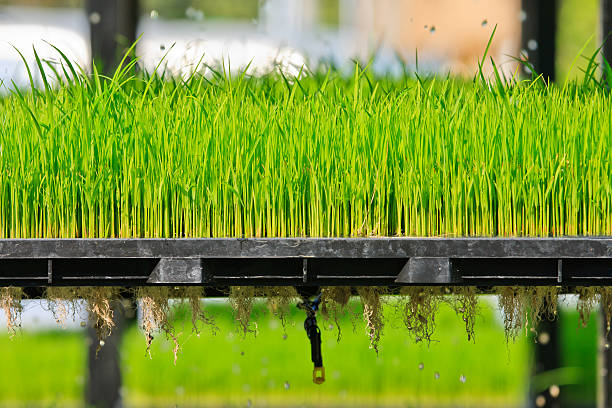
Aeroponic systems are a method of growing plants in which the roots are suspended in the air and misted with a nutrient-rich water solution at regular intervals. This method is similar to hydroponics, as it uses a nutrient solution rather than soil, but it has some distinct differences.
Aeroponic systems work by misting the plant’s roots with a fine spray of water and nutrients, providing them with the necessary moisture and nutrients for growth. The misting intervals can be adjusted to provide the optimal amount of water and nutrients for the plants. The roots are exposed to the air, which allows for the free exchange of oxygen, promoting healthy root development.
There are several types of aeroponic systems, including:
- High-pressure aeroponics: This system uses high-pressure pumps to create a fine mist of nutrient solution that is sprayed directly onto the roots. This method is highly efficient and can support a high density of plants.
- Low-pressure aeroponics: This system uses low-pressure pumps to create a fine mist of nutrient solution that is sprayed directly onto the roots. This method is less efficient than high-pressure aeroponics but is also less complex to set up and maintain.
- Continuous mist: This system sprays a continuous mist of nutrient solution onto the roots. It’s less efficient than high-pressure aeroponics and requires more maintenance.
Aeroponic systems are great for small indoor areas as they take up very little space and can be easily controlled to provide optimal growing conditions. They are also highly efficient in the use of water and nutrients and can support a higher density of plants per square foot. However, they are more complex to set up and maintain than hydroponic systems, requiring more attention and maintenance from the gardener.
Explanation of what aeroponic systems are and how they work
Aeroponic systems are a method of growing plants in which the roots are suspended in the air and misted with a nutrient-rich water solution at regular intervals. This method is similar to hydroponics, as it uses a nutrient solution rather than soil, but it has some distinct differences.
In aeroponic systems, the plants are grown in a container, such as a tray or a pot, and their roots are suspended in the air. A fine mist of nutrient-rich water is then sprayed onto the roots at regular intervals, providing the plants with the necessary moisture and nutrients for growth. The misting intervals can be adjusted to provide the optimal amount of water and nutrients for the plants, while the roots being exposed to the air allows for the free exchange of oxygen promoting healthy root development.
Aeroponic systems work by using a pump to create a fine mist of nutrient solution that is sprayed directly onto the roots. The pump is typically powered by electricity and can be controlled to adjust the misting intervals and the amount of water and nutrients delivered to the plants.
One of the key advantages of aeroponic systems is that they can be highly efficient in the use of water and nutrients, as the water and nutrients are recycled, reducing the need for frequent watering and fertilization. Additionally, aeroponic systems can support a higher density of plants per square foot, leading to higher yields of produce compared to traditional soil-based gardening methods.
Overall, aeroponic systems are a highly efficient and effective method of growing plants in small indoor areas, providing a controlled environment for plants to thrive, without the need for soil, but they are more complex to set up and maintain than hydroponic systems.
Benefits of aeroponic systems for small indoor gardening
Aeroponic systems offer several benefits for small indoor gardening, including:
Space-saving: Aeroponic systems take up very little space compared to traditional soil-based gardening methods. This makes them a great option for small indoor areas such as apartments or homes with limited outdoor space.
Efficiency: Aeroponic systems are highly efficient in the use of water and nutrients, as the water and nutrients are recycled, reducing the need for frequent watering and fertilization. This can save time and money for the gardener.
Control: Aeroponic systems allow for precise control over the growing environment, including temperature, humidity, light, and nutrient levels. This allows for optimal growing conditions for plants, leading to healthier and more productive plants.
Year-round gardening: Indoor aeroponic systems allow for year-round gardening, regardless of the weather conditions outside. This allows the gardener to grow plants and produce all year, even in areas with harsh winters or short growing seasons.
High yield: Aeroponic systems can support a higher density of plants per square foot, which leads to higher yields of produce compared to traditional soil-based gardening methods.
Variety: Aeroponic systems can be used to grow a wide range of plants, including fruits, vegetables, herbs and even flowers, providing a diverse and abundant harvest.
Pest & Disease control: As the plants are grown in a controlled environment, it’s easier to monitor and control the environment to avoid pests and diseases, reducing the need for pesticides or chemicals.
Healthy Root Development: The roots of the plants are exposed to the air allowing for the free exchange of oxygen promoting healthy root development.
Overall, aeroponic systems offer many benefits for small indoor gardening, including the ability to save space, increase efficiency and productivity, and provide a controlled environment for plants to thrive in, but they require more maintenance and attention than hydroponic systems.
Different types of aeroponic systems and which ones are best for small indoor areas
There are several types of aeroponic systems, each with their own advantages and disadvantages. The best one for you will depend on the specific requirements of your indoor gardening space and what you are looking to grow. Some of the most popular types of aeroponic systems include:
High-pressure aeroponics: This system uses high-pressure pumps to create a fine mist of nutrient solution that is sprayed directly onto the roots. This method is highly efficient and can support a high density of plants.
Low-pressure aeroponics: This system uses low-pressure pumps to create a fine mist of nutrient solution that is sprayed directly onto the roots. This method is less efficient than high-pressure aeroponics but is also less complex to set up and maintain.
Continuous mist: This system sprays a continuous mist of nutrient solution onto the roots. It’s less efficient than high-pressure aeroponics and requires more maintenance.
For small indoor areas, the best options are usually the low-pressure aeroponics and continuous mist systems, as they take up less space and are less complex to set up and maintain than high-pressure aeroponics. Low-pressure aeroponics are considered a great option for beginners, as they are easy to set up and maintain. The continuous mist system is less efficient but it’s also less complex to set up and maintain.
CONTAINER GARDENING
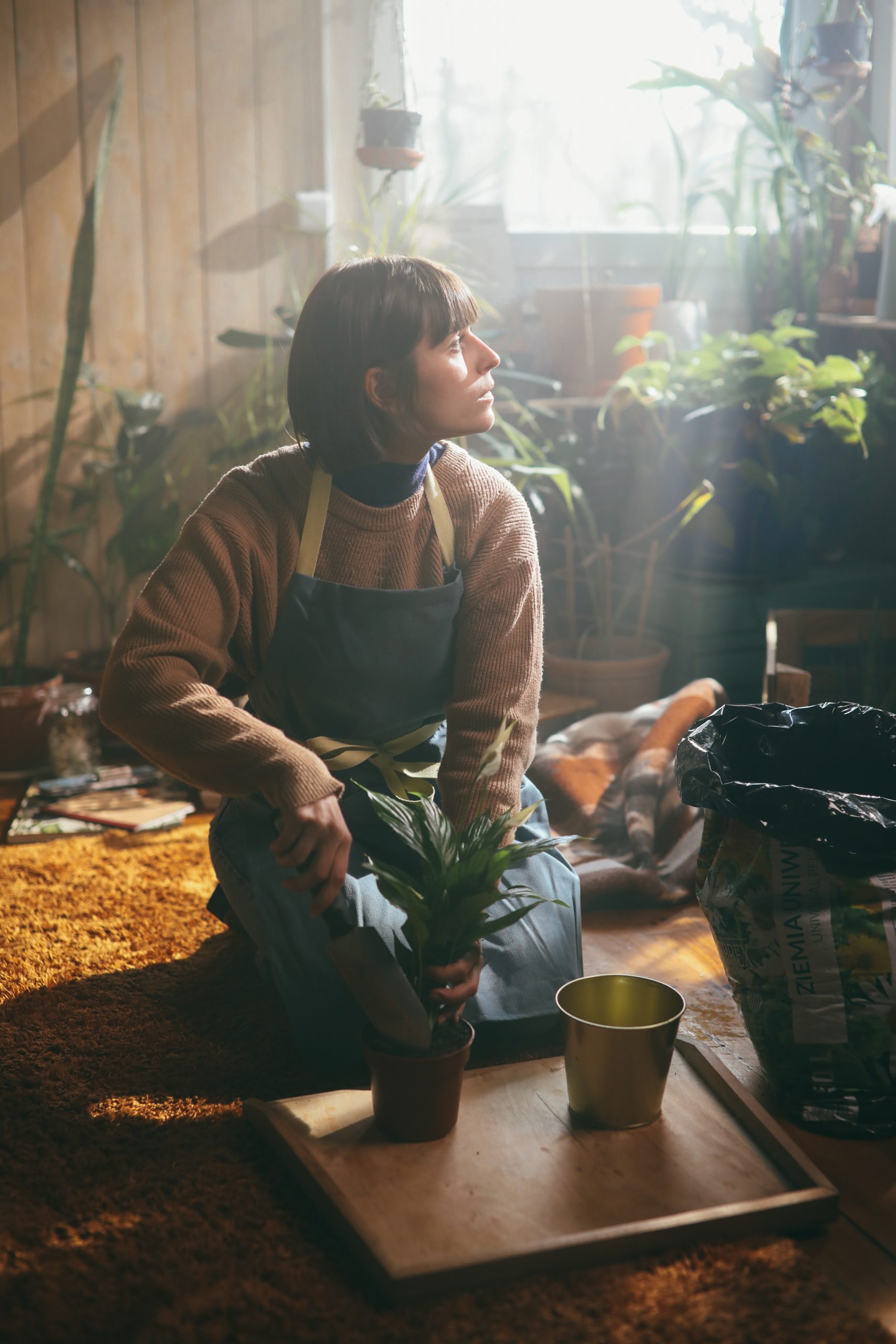
Container gardening is a method of growing plants in pots, bags, or trays, rather than in the ground. This method is ideal for small indoor areas as it allows you to control the environment and easily move plants around.
In container gardening, plants are grown in a container filled with soil, compost or other growing medium. The container can be made of a variety of materials such as plastic, clay, wood or metal. The size and type of container will depend on the plant and the size of the root system.
One of the key benefits of container gardening is that it allows you to control the growing environment, such as temperature, humidity, light, and soil conditions. This can be especially important in small indoor areas where the natural environment may not be ideal for certain plants. Additionally, container gardening allows for easy maintenance and care of the plants, as well as the ability to move them around to optimize light and temperature.
Container gardening is also a great option for small indoor areas as it allows for flexibility in the placement of plants, whether it be on a windowsill, a balcony or a small patio. You may shop patio kits online to improve your patio. Container gardening also allows for a wide variety of plants to be grown, including fruits, vegetables, herbs, and even flowers. Container gardening is an excellent choice for small indoor spaces, and windowsills are an ideal location. An article on https://www.naturfonster.se/ talks about windowsill gardening benefits from natural light, making it suitable for a variety of plants like herbs, succulents, and even small fruit trees. It not only adds beauty to your space but also contributes to a calming atmosphere. Maintenance is easy with plants right at hand, and you can even grow your own vegetables, reducing reliance on store-bought produce. In essence, windowsill container gardening is a convenient and rewarding way to create a green oasis in limited indoor areas.
Overall, container gardening is an easy and versatile way to grow plants in small indoor areas, providing a controlled environment for plants to thrive in and allowing for easy maintenance and movement of plants.
Explanation of what container gardening is and how it works
Container gardening is a method of growing plants in pots, bags, or trays, rather than in the ground. This method allows for greater flexibility and control over the growing environment, making it an ideal option for small indoor areas.
In container gardening, plants are grown in a container filled with soil, compost, or other growing medium. The container can be made of a variety of materials such as plastic, clay, wood, or metal. The size and type of container will depend on the plant and the size of the root system.
The container gardening process starts by selecting a container that is appropriate for the plant, and then filling it with a well-draining growing medium, such as soil or compost. The plants are then placed in the container and regularly watered and fertilized. The container gardening allows for easy maintenance of the plants, as well as the ability to move them around to optimize light and temperature.
One of the key benefits of container gardening is that it allows you to control the growing environment, such as temperature, humidity, light, and soil conditions. This can be especially important in small indoor areas where the natural environment may not be ideal for certain plants. Additionally, container gardening is easy to set up and it allows for flexibility in the placement of plants, whether it be on a windowsill, a balcony or a small patio.
Container gardening also allows for a wide variety of plants to be grown, including fruits, vegetables, herbs, and even flowers. This can provide fresh produce and a beautiful garden in small indoor spaces.
Overall, container gardening is a simple and effective method of growing plants in small indoor areas, providing a controlled environment and flexibility in the placement of plants. It’s an easy way to have fresh produce and beautiful plants in small indoor spaces.
Benefits of container gardening for small indoor areas
Container gardening is a great option for small indoor areas because it allows you to grow plants in a limited space. Some benefits of container gardening include:
Flexibility: Container gardens can be moved around and rearranged as needed, allowing you to change the look of your indoor space easily.
Control over soil: When gardening in containers, you have complete control over the soil and can choose the best type of soil for the plants you’re growing.
Drainage: Containers have drainage holes, allowing excess water to escape, which helps prevent root rot and other problems.
Pest control: Container gardening can help keep pests and diseases at bay, as you can isolate plants and keep them away from potential pests.
Variety: Container gardening allows you to grow a wide variety of plants in one small space, even plants that would not normally grow in your region.
Accessibility: Container gardening is easy to start and maintain, it is a great way to bring nature to small indoor spaces, and can be enjoyed by people of all ages and abilities.
CONCLUSION
Growing your own food can be a rewarding and sustainable way to ensure that you always have fresh produce on hand. However, for those living in small indoor spaces, it can be challenging to find ways to grow food indoors. In this article, we will explore the best ways to grow food in small indoor areas.
Container gardening: Container gardening is a great option for small indoor spaces because it allows you to grow plants in a limited space. You can use pots, planters, or even hanging baskets to grow a wide variety of vegetables, herbs, and fruits. It’s also easy to move container gardens around as needed, giving you control over the lighting and temperature.
Hydroponics: Hydroponics is a method of growing plants without soil, using a nutrient-rich solution instead. This method is great for small indoor spaces because it doesn’t take up much room and can yield high crop yields. You can also use this method for growing plants in a vertical setup, which is ideal for small indoor spaces.
Aeroponics: Aeroponics is a method of growing plants in an air or mist environment without the use of soil. This method is great for small indoor spaces as it doesn’t take up much room and can yield high crop yields. Aeroponics is also a great way to grow plants in a vertical setup, which is ideal for small indoor spaces.
Window gardens: Window gardens are a great way to grow food in small indoor spaces. You can use a windowsill, windowsill planters, or even a hanging window garden to grow a wide variety of herbs, vegetables, and fruits. Just make sure that the window you choose gets enough sunlight for the plants you want to grow.
Indoor greenhouses: Indoor greenhouses are a great way to grow food in small indoor spaces. They can be purchased or homemade, and they can range in size from small table-top greenhouses to larger walk-in greenhouses. This can give you the ability to control the temperature and lighting for your plants, allowing you to grow a wide variety of fruits and vegetables year-round.
In conclusion, there are many ways to grow food in small indoor spaces. Whether you choose container gardening, hydroponics, aeroponics, window gardens, or indoor greenhouses, you can enjoy fresh, healthy produce all year round. With a little creativity and planning, you can make the most of your small indoor space and enjoy the benefits of growing your own food.
ENCOURAGEMENT TO TRY INDOOR GARDENING IN SMALL SPACES.
Indoor gardening in small spaces can be a fun and rewarding experience. Not only will you have the satisfaction of growing your own food, but you’ll also have the opportunity to bring a little bit of nature into your home. Here are a few reasons why you should consider trying indoor gardening in small spaces:
Access to fresh produce: Growing your own fruits and vegetables in a small indoor space means you’ll always have fresh produce on hand. This can be especially beneficial in the winter when fresh produce is harder to come by.
Cost-effective: Indoor gardening can save you money in the long run as you won’t have to buy as much produce from the store. Plus, once you have the initial setup, the ongoing costs are minimal.
Fun and therapeutic: Gardening can be a relaxing and therapeutic activity. It’s a great way to de-stress and connect with nature, even if you’re indoors.
Educational: Indoor gardening can be a great way to teach children about where food comes from and how it grows. It’s also a great way to learn about different plants, their care, and how to propagate them.
Customizable: You can choose the plants that you like the most and make your indoor garden look exactly the way you want it to. You can also choose the containers and the layout that will suit your space the best.
Overall, indoor gardening in small spaces is a great way to enjoy fresh produce, save money, and have fun while doing it. With a little bit of planning and care, you can create a beautiful and productive indoor garden that will bring joy to your home




